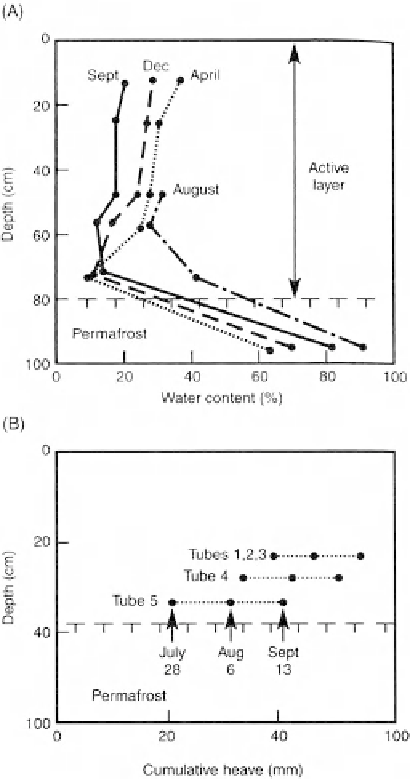Geology Reference
In-Depth Information
remain unfrozen at
1.0 °C (Williams, 1976, 1977; see Figure 4.2) and that unfrozen water
moves in the direction of colder temperature (the concept of capillarity). Therefore, the
ice (water) content in the upper part of the active layer increases when a positive ground
temperature gradient occurs in winter (i.e. the ground is warmer than the air) (Figure
5.13A). Under negative ground temperature gradients in summer, unfrozen water migrates
downwards and the ice content in the upper part of permafrost increases. Late-summer
heaving of the active layer is the result (Figure 5.13B).
In summary, the concept of the transient layer recognizes the different periodicities at
which the near-surface of permafrost terrain cycles through 0 °C (Nelson, 2004, p. 258),
and the relative abundance, morphology, and distribution of ice contained within the
active layer and the upper part of permafrost.
−
Figure 5.13.
Seasonal changes in moisture content in the active layer. (A) Changes in water content
for the active layer and top of permafrost in Siberia. (B) Summer (1978) movement (heave) of active
layer at Garry Island, Mackenzie Delta region, Canada. From Mackay (1983a).

